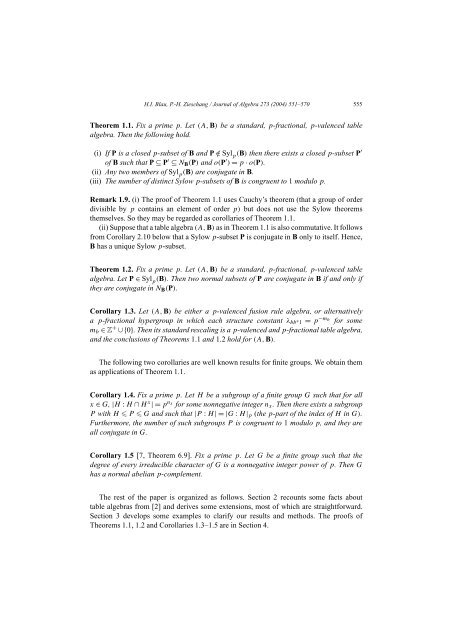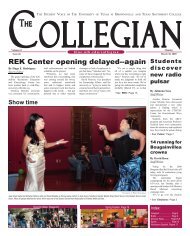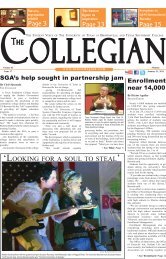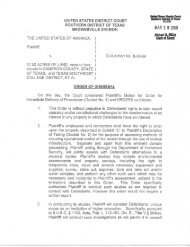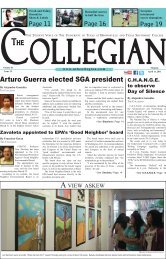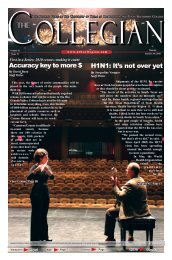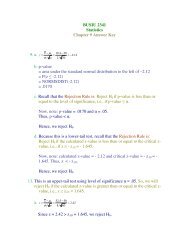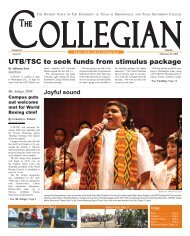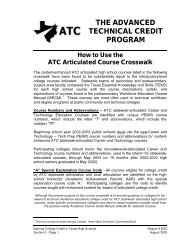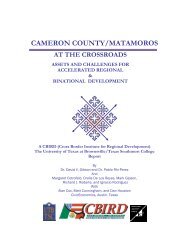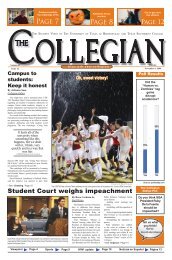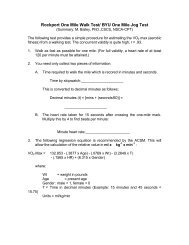Sylow theory for table algebras, fusion rule algebras, and ... - blue
Sylow theory for table algebras, fusion rule algebras, and ... - blue
Sylow theory for table algebras, fusion rule algebras, and ... - blue
You also want an ePaper? Increase the reach of your titles
YUMPU automatically turns print PDFs into web optimized ePapers that Google loves.
H.I. Blau, P.-H. Zieschang / Journal of Algebra 273 (2004) 551–570 555<br />
Theorem 1.1. Fix a prime p. Let(A, B) be a st<strong>and</strong>ard, p-fractional, p-valenced <strong>table</strong><br />
algebra. Then the following hold.<br />
(i) If P is a closed p-subset of B <strong>and</strong> P /∈ Syl p (B) then there exists a closed p-subset P ′<br />
of B such that P ⊆ P ′ ⊆ NB(P) <strong>and</strong> o(P ′ ) = p · o(P).<br />
(ii) Any two members of Syl p (B) are conjugate in B.<br />
(iii) The number of distinct <strong>Sylow</strong> p-subsets of B is congruent to 1 modulo p.<br />
Remark 1.9. (i) The proof of Theorem 1.1 uses Cauchy’s theorem (that a group of order<br />
divisible by p contains an element of order p) but does not use the <strong>Sylow</strong> theorems<br />
themselves. So they may be regarded as corollaries of Theorem 1.1.<br />
(ii) Suppose that a <strong>table</strong> algebra (A, B) as in Theorem 1.1 is also commutative. It follows<br />
from Corollary 2.10 below that a <strong>Sylow</strong> p-subset P is conjugate in B only to itself. Hence,<br />
B has a unique <strong>Sylow</strong> p-subset.<br />
Theorem 1.2. Fix a prime p. Let(A, B) be a st<strong>and</strong>ard, p-fractional, p-valenced <strong>table</strong><br />
algebra. Let P ∈ Syl p (B). Then two normal subsets of P are conjugate in B if <strong>and</strong> only if<br />
they are conjugate in NB(P).<br />
Corollary 1.3. Let (A, B) be either a p-valenced <strong>fusion</strong> <strong>rule</strong> algebra, or alternatively<br />
a p-fractional hypergroup in which each structure constant λbb ∗ 1 = p −mb <strong>for</strong> some<br />
mb ∈ Z + ∪{0}. Then its st<strong>and</strong>ard rescaling is a p-valenced <strong>and</strong> p-fractional <strong>table</strong> algebra,<br />
<strong>and</strong> the conclusions of Theorems 1.1 <strong>and</strong> 1.2 hold <strong>for</strong> (A, B).<br />
The following two corollaries are well known results <strong>for</strong> finite groups. We obtain them<br />
as applications of Theorem 1.1.<br />
Corollary 1.4. Fix a prime p. LetH be a subgroup of a finite group G such that <strong>for</strong> all<br />
x ∈ G, |H : H ∩ H x |=p nx <strong>for</strong> some nonnegative integer nx. Then there exists a subgroup<br />
P with H P G <strong>and</strong> such that |P : H |=|G : H |p (the p-part of the index of H in G).<br />
Furthermore, the number of such subgroups P is congruent to 1 modulo p, <strong>and</strong> they are<br />
all conjugate in G.<br />
Corollary 1.5 [7, Theorem 6.9]. Fix a prime p. LetG be a finite group such that the<br />
degree of every irreducible character of G is a nonnegative integer power of p. ThenG<br />
has a normal abelian p-complement.<br />
The rest of the paper is organized as follows. Section 2 recounts some facts about<br />
<strong>table</strong> <strong>algebras</strong> from [2] <strong>and</strong> derives some extensions, most of which are straight<strong>for</strong>ward.<br />
Section 3 develops some examples to clarify our results <strong>and</strong> methods. The proofs of<br />
Theorems 1.1, 1.2 <strong>and</strong> Corollaries 1.3–1.5 are in Section 4.


